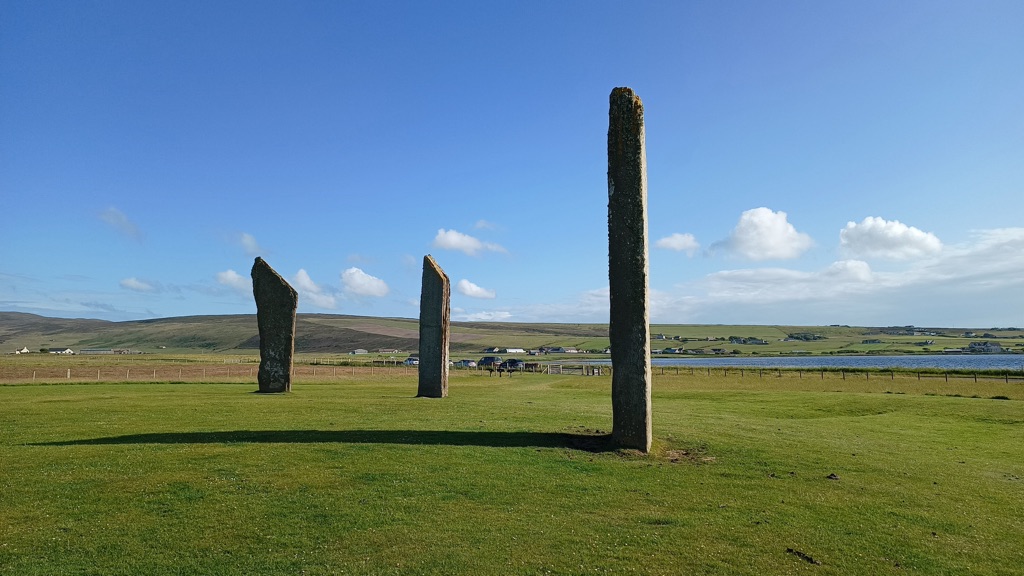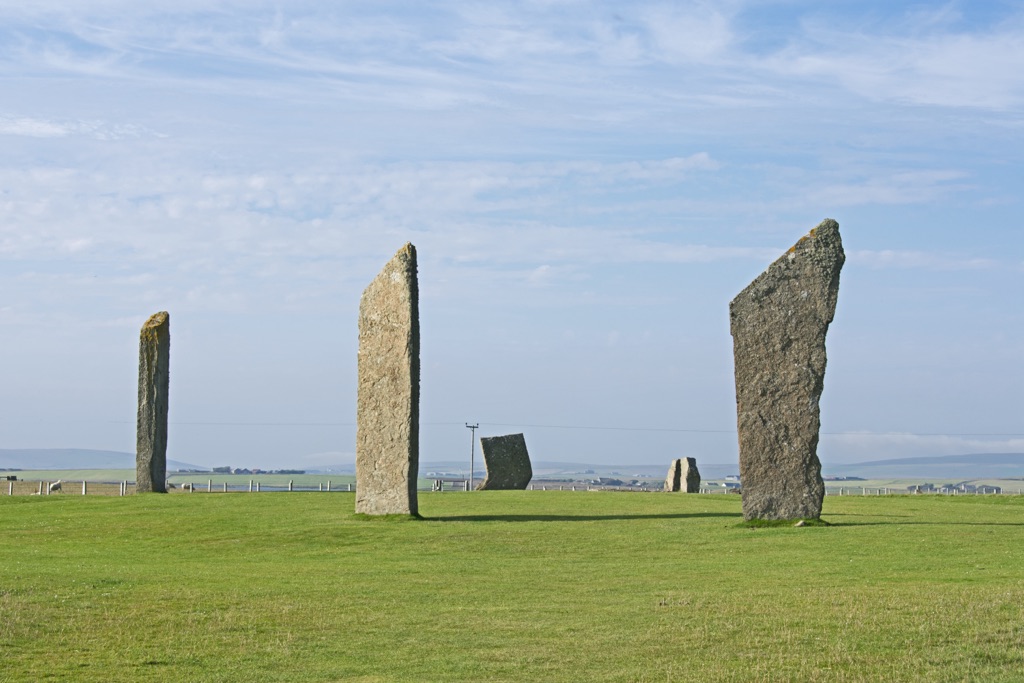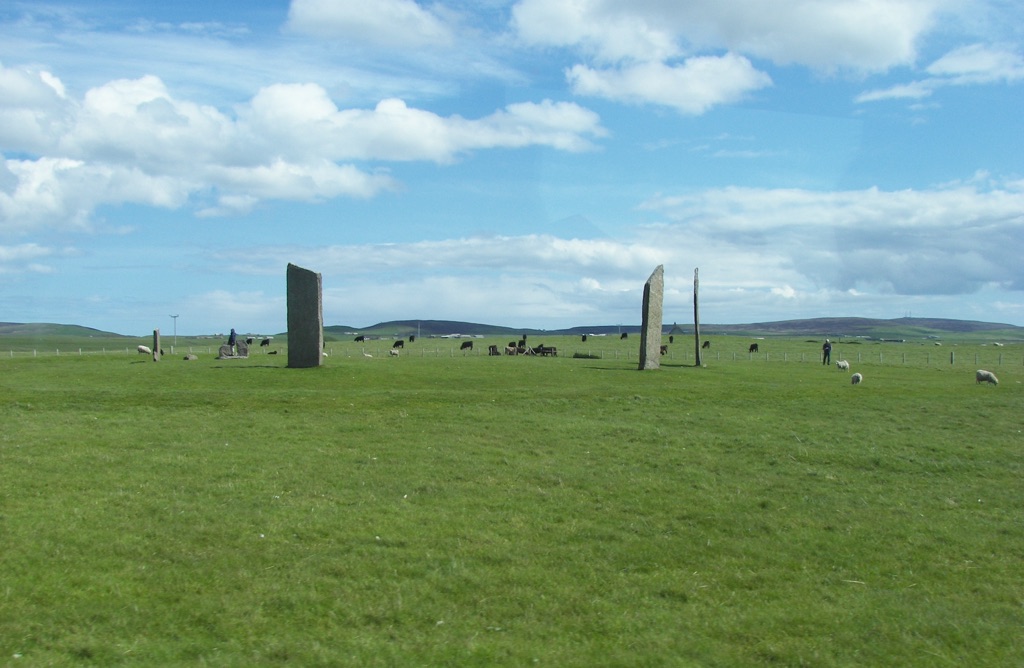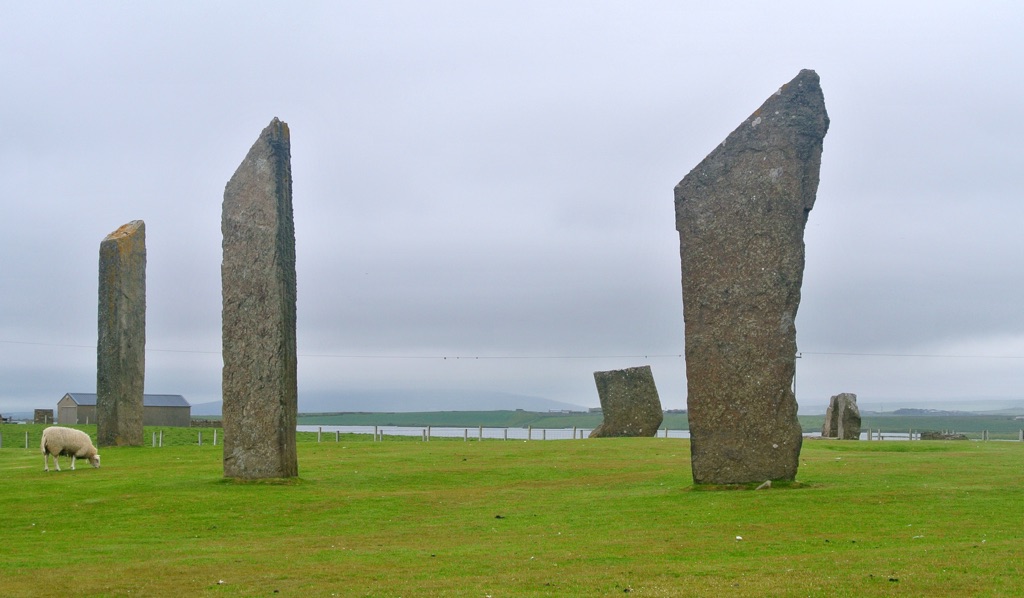The Standing Stones of Stenness: A Neolithic Marvel
The Standing Stones of Stenness, located five miles northeast of Stromness on the Orkney mainland in Scotland, is a captivating Neolithic monument. This site, possibly the oldest henge in the British Isles, forms part of the Heart of Neolithic Orkney World Heritage Site. Historic Environment Scotland manages it as a scheduled monument.
Get your dose of History via Email
Layout and Location
This ancient site sits on a promontory on the south bank of the stream joining Loch of Stenness and Loch of Harray. Rich in history, the name “Stenness” comes from Old Norse, meaning “stone headland.” Historically, a stepping stone causeway crossed the stream, which is now bridged. Nearby, the Ring of Brodgar lies about 1.2 km to the northwest, and the Maeshowe chambered cairn is about 1.2 km to the east. This area brims with Neolithic monuments, underscoring its historical significance.

The Henge Monument
Though the original encircling ditch and bank are gone, excavations confirmed the site’s status as a henge monument. The remaining stones, thin slabs about 30 cm thick with sharply angled tops, once formed a circle of up to 12 stones. Today, four stones remain, standing up to 5 meters high. They form an ellipse about 32 meters in diameter on a leveled platform of 44 meters in diameter. The ditch, cut into rock as much as 2 meters deep and 7 meters wide, was surrounded by an earth bank with a single entrance causeway on the north side, facing the Neolithic Barnhouse Settlement near Loch of Harray.
The Watch Stone, standing outside the circle to the northwest, is 5.6 meters high. Historical records suggest at least two stones once stood here, as a stump of a second stone was found in the 1930s. The site also includes smaller stones, like a square stone setting in the circle’s center. This setting contained cremated bone, charcoal, and pottery, known as a “hearth,” similar to one at Barnhouse. Radiocarbon dating suggests construction began around 3100 BCE.

Traditions and History
In “Rites of the Gods,” Aubrey Burl imagines families approaching Stenness with bundles of bones from disinterred corpses, ready for ceremonies involving feasting and totem animal sacrifices. Even in the 18th century, traditions and rituals linked to Norse gods were associated with the site. Walter Scott visited in 1814, and other antiquarians documented local traditions and beliefs about the stones.
One notable stone, the “Odin Stone,” stood north of the henge. Pierced with a circular hole, local couples used it for engagements by holding hands through the gap. This stone, along with another, was destroyed in December 1814 by Captain W. Mackay, who owned nearby farmland and sought to prevent locals from using the stones for rituals. His actions caused outrage, halting further destruction.
In 1906, a toppled stone was re-erected with some inaccurate reconstruction. In the 1970s, a dolmen structure was toppled due to doubts about its authenticity, leaving two upright stones remaining.
Influence on Popular Culture
The Standing Stones of Stenness have influenced various artists:
- Van Morrison featured a picture of the stones on his album “The Philosopher’s Stone.”
- Julian Cope’s album “Discover Odin” depicts the Odin Stone.
- Loreena McKenn
itt’s song “Standing Stones” from her album “Parallel Dreams” uses the stones as a setting for a story of star-crossed lovers.

World Heritage Status
In December 1999, the Heart of Neolithic Orkney, including the Standing Stones of Stenness, was designated a World Heritage site. This recognition also includes Maeshowe, Skara Brae, the Ring of Brodgar, and other nearby sites. Historic Environment Scotland manages the site, celebrating the triumphs of early human civilization.
The Standing Stones of Stenness, alongside other Neolithic sites in the area, offer a profound insight into the ritual customs and daily lives of ancient peoples. These sites, contemporary with early Egyptian and Sumerian structures, stand as a testament to the achievements of early societies far from traditional centers of civilization.
Sources:

